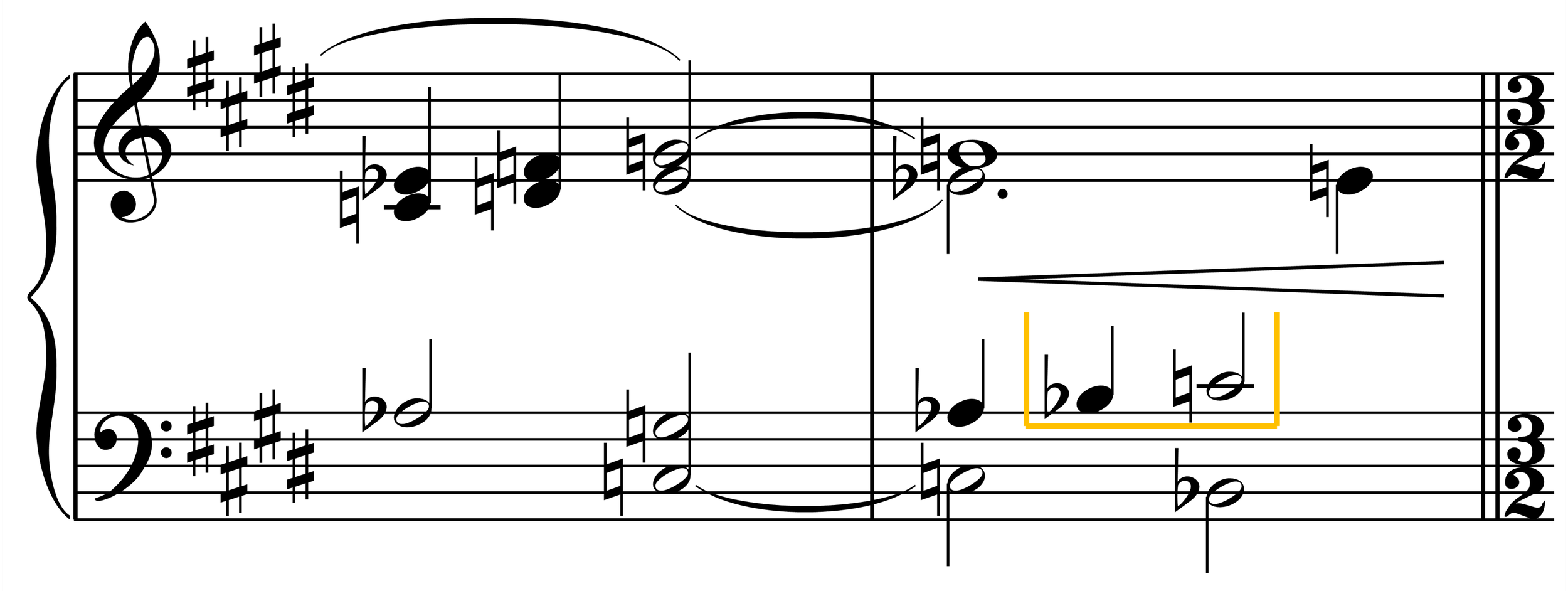“Taking the C-sharp in the left hand eliminates a position shift in the right hand.”
Submitted by Michael Clark
Published on 1/1/2020

“Taking the C-sharp in the left hand eliminates a position shift in the right hand.”
Submitted by Michael Clark
Published on 1/1/2020

”I find descending broken octaves, especially those that range multiple octaves and cross the body, difficult to execute. With this redistribution, I alternate hands to play the D# (an easy key to find quickly, since it's a black key). I find that I can still retain the quality of the two-note slur, even with this redistribution.”
Submitted by Sarah Rushing
Published on 2/20/2020

Submitted by Bang Hean Loo
Published on 5/22/2025
“To gain more security in the hazardous leaps at the opening, switch some of the triplet 32nd-note figures so that there is a little more time to jump up to the octaves [also applies in mm. 1–10].”

“Taking the alto line in the left hand frees the right for an expressive triplet that matches the singer without worrying about a polyrhythm within one hand.”
Submitted by Michael Clark
Published on 3/17/2020

“The left hand has been playing octaves already, so it’s simpler to continue that pattern.”
Submitted by Michael Clark
Published on 3/17/2020

Submitted by John Patrick Murphy
Published on 12/30/2020

“Keeping the accompaniment figure in the left hand in m. 12 helps the melody line to be more legato.”
Submitted by Michael Clark
Published on 3/17/2020

“These redistributions help reduce the number of position shifts whenever possible.”
Submitted by Michael Clark
Published on 3/17/2020

“This fingering helps facilitate a clear counterpoint of the upward moving motif played before in the right hand without muddying the waters with the pedal.”
Submitted by Wade Troyer
Published on 12/14/2022

“Spacing the chord like this helps all the notes to sound at once and keeps that consistent texture without needing to roll or play the notes before or after the 3rd beat. Also, it allows the left hand to hold the low F# through the quick moving harmonies above it without muddying too much with the pedal.”
Submitted by Wade Troyer
Published on 9/1/2023

“Catching the A in left hand helps achieve a smoother bass line with less reliance on the pedal.”
Submitted by Wade Troyer
Published on 12/14/2022

“This splitting of notes between hands allows the chords to not be rolled in the left hand and the pianissimo in the final measures is easier to achieve. Other moments like this occur throughout the piece but this is the one that makes the most sense to alter.”
Submitted by Wade Troyer
Published on 12/14/2022

“The constant, inner, scalar movement of 8th notes is difficult if playing between the hands as written. I enjoy the sound of this movement if using less pedal which necessitates more splitting and picking up notes between hands.”
Submitted by Wade Troyer
Published on 8/31/2023

“The constant, inner, scalar movement of 8th notes is difficult if playing between the hands as written. I enjoy the sound of this movement if using less pedal which necessitates more splitting and picking up notes between hands.”
Submitted by Wade Troyer
Published on 8/31/2023

“The constant, inner, scalar movement of 8th notes is difficult if playing between the hands as written. I enjoy the sound of this movement if using less pedal which necessitates more splitting and picking up notes between hands.”
Submitted by Wade Troyer
Published on 8/31/2023

”Use the right hand to play the inner voice and bring out the subject in the left hand.”
Submitted by Po Sim Head
Published on 1/30/2021

Submitted by Jake Holtzman with thanks to Anton Nel
Published on 12/31/2021

Submitted by Jake Holtzman
Published on 12/31/2021